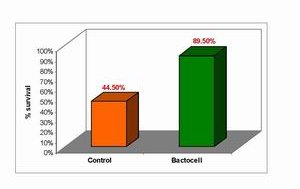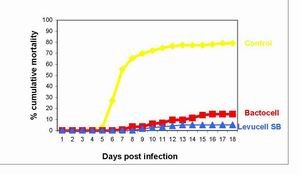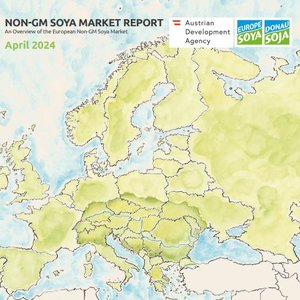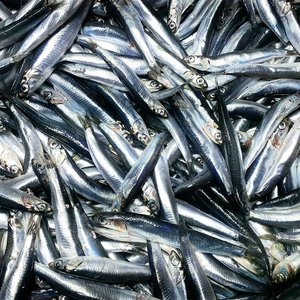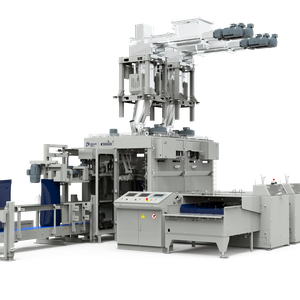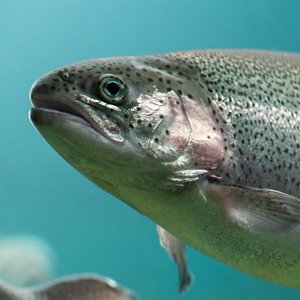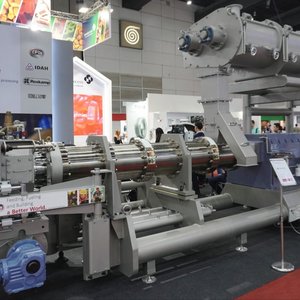Probiotics: a natural solution to improve aquatic species growth and health conditions
Live microorganisms are commonly used in aquaculture as a safe and natural solution to control microbiological ecosystems, either directly in the water (bioremediation concept), or via fish feed (probiotic concept). Probiotics (“for life” in Greek) have been defined by the FAO as “live-microorganisms that, when ingested alive in sufficient amount, have a positive effect on the health that goes beyond the traditional nutritional effect.” Their advantages over bioremediation include a better control of the number of microorganisms delivered to the animal and the environment. To date, numerous research and production trials are showing that probiotics have an effect on both growth performances and health status of aquatic species.
1. Live lactic acid bacteria: strengthening the ecosystems.
Lactic acid producing bacteria Pediococcus acidilactici strain MA 18/5M (Commercial name: Bactocell®, from
| | Salmonids | Shrimp | Tilapia | Eel | |
| | Salmon | Rainbow Trout | |||
| Performances | | | + + growth rate + length | ++ | ++ improved FCR |
| Survival | | Protection against Yersinia ruckeri infection | + + vs vibriosis | ++ | + |
| Other health banefits | Vertebral Column Compression Syndrome prevention | Gut and water microflora control | | Improves immune parameters and gut histology | |
Synthesis of performances and sanitary benefits of Bactocell supplementation in the feed of aquatic species.
ü Improves growth and resistance to winter syndrome in shrimps
A production trial conducted at the Vung Tau Center for Shrimp Research and Production, in Viet Nam (Dec 2001- Feb 2002), showed a 52% significant increase in Shrimp Juvenile Penaeus monodon growth rate at 8 weeks, and the size homogeneity was greater when compared to control. Shrimps length was also increased by 15%. This effect on growth could be due to the improvement of digestive activity by synthesis of vitamins, cofactors or improvement of enzymatic activity by the probiotic. Concerning shrimp survival rate, when assessing for pathogens count (Vibrio population), both in the tank water and the shrimps gut, it decreased after 4 and 8 weeks treatment with Bactocell. Another trial performed in
The IFREMER study showed the ability of Bactocell to help improve marine shrimp Litopenaeus stylirostris survival when submitted to temperature variations. In fact, when the water temperature decreases below 22°C, L. stylirostris is subject to osmoregulation problems, as well as increased risk of winter syndrome, or syndrome 93. The winter syndrome is caused by Vibrio penaeicida, and has important impact for producers, as it is responsible for very high mortality rates (about 60%). After 20 days treatment, with tanks temperature variations between 25°C and 20°C, shrimps survival rate is increased by 73% due to Bactocell supplementation.
Graph 1: Average survival rates after 20 days treatment with or without Bactocell at 10E6 CFU/g in Shrimp Juveniles (IFREMER-2004)
Previous work also demonstrated that Bactocell improves the immune parameters of shrimps and stimulates their natural defenses. Altogether, these works demonstrate that Bactocell is effective in shrimps to improve performances and survival, but also to better control the gut microflora, keeping pathogens at bay, while stimulating shrimps immune defences.
ü Health benefits in salmonids
In salmonids, breeding conditions are well controlled and zootechnical performances optimal. Nevertheless, probiotics, by regulating the gut and environmental microbiota, have some significant health benefits.
For example, a worldwide patent has recently been filed by IFREMER (French Research Institute for the Exploitation of the Sea), and INRA, the French Agronomic Research Institute, for the use of Bactocell in the prevention of Vertebral Column Compression Syndrome (VCCS) in Salmonids. VCCS is an issue of important economic impacts for trout and salmon producers. For example, it can affect up to 30% of the livestock for rainbow trout. VCCS is a skeletal malformation that occurs in breeding conditions and reduces the length of fish. As a result, the fish has a bad visual aspect and fillet cutting is impossible, leading to important economic losses. So far, the only effective prevention method was the use of an antibiotic, Florphenicol, with all the environmental and consumers impact known to this class of products. Experimental studies have shown that the supplementation of feed with live bacteria Bactocell induced levels of protection against VCCS in rainbow trout equivalent to those obtained with the antibiotic. The study concluded that Bactocell represented an effective and sustainable prophylactic solution against VCCS.
ü Increases growth and survival rates in Tilapia
Trials conducted in field conditions in
ü Improves growth and immune defenses parameters of Japanese Eel
In December 2004, Lallemand supervised a trial at the Pearl River Aquaculture Research Center in China with Bactocell on Japanese eel (Anguilla japonica) , demonstrating a significant effect of the probiotic on the growth parameters of the Eel at eight weeks: weight gain rate was increased by 52% with a final mean weight per fish increased by 29%. Feed conversion rate was also significantly improved, as well as survival rate.
This study also highlighted the effects of Bactocell on the immune response: enhanced macrophage activity was shown by the significant increase in serum Nitric Oxide levels. Fish gut histology was also affected: improvement of the microvillae structure in the distal intestine.
2. S. boulardii yeast: the “Shield Effect”
Saccharomyces cerevisiae var. boulardii CNCM 1079 (Levucell®SB,) is another probiotic for which aquaculture applications are actually under investigations at Lallemand. S. boulardii is well-known in human health for its positive effects against intestinal disturbance; it is often recommended in the prevention of antibiotic associated diarrhoea. S. boulardii is unique among the thousands of strains of the S. cerevisiae yeast species. Its mode of action in the gut is well understood, and corresponds to a real "shield effect”, reinforcing the microbial ecosystem and protecting the animal’s digestive tract.
A recent AFSSA study (OFIMER program reported in Feed Mix Vol. 13 No 3) highlights Levucell SB “shield effect” in aquaculture, in particular for the protection of salmonids against yersiniosis. In experimental conditions, salmon trouts challenged with Yersinia ruckeri (an enterobacteria causing the “red mouth” disease) were extremely resistant to the infection after four months probiotic supplementation. Even when high doses of pathogens were used (graph 1), the mortality rate dropped from about 80-90% to 5-6% with Levucell SB. Moreover, the rate of healthy carriers of Yersinia also decreased from 80% to 15% with Levucell SB, demonstrating its efficacy as a prophylactic agent.
Graph 1: The mortality rate after Yersinia challenge in rainbow trout shows the important prophylactic effect of probiotics Levucell SB and Bactocell (Challenge dose : 2.4 102 bacteria/fish)
In conclusion, the probiotic approach represent a natural and safe solution to improve aquaculture performances and sanitary conditions in a way that seems perfectly adapted to the challenges of today’s aquaculture industry.
By Vincent Usache, Aquaculture Technical Manager, Lallemand Animal Nutrition (
For more info visit www.lallemand.com or contact Vincent Usache at: aqua@lallemand.com
Lallemand is a Canadian company founded in 1915 and specialised in the development, production and marketing of specific yeast, bacteria and high value yeast derivatives. The Animal Nutrition Division of the company, based near


